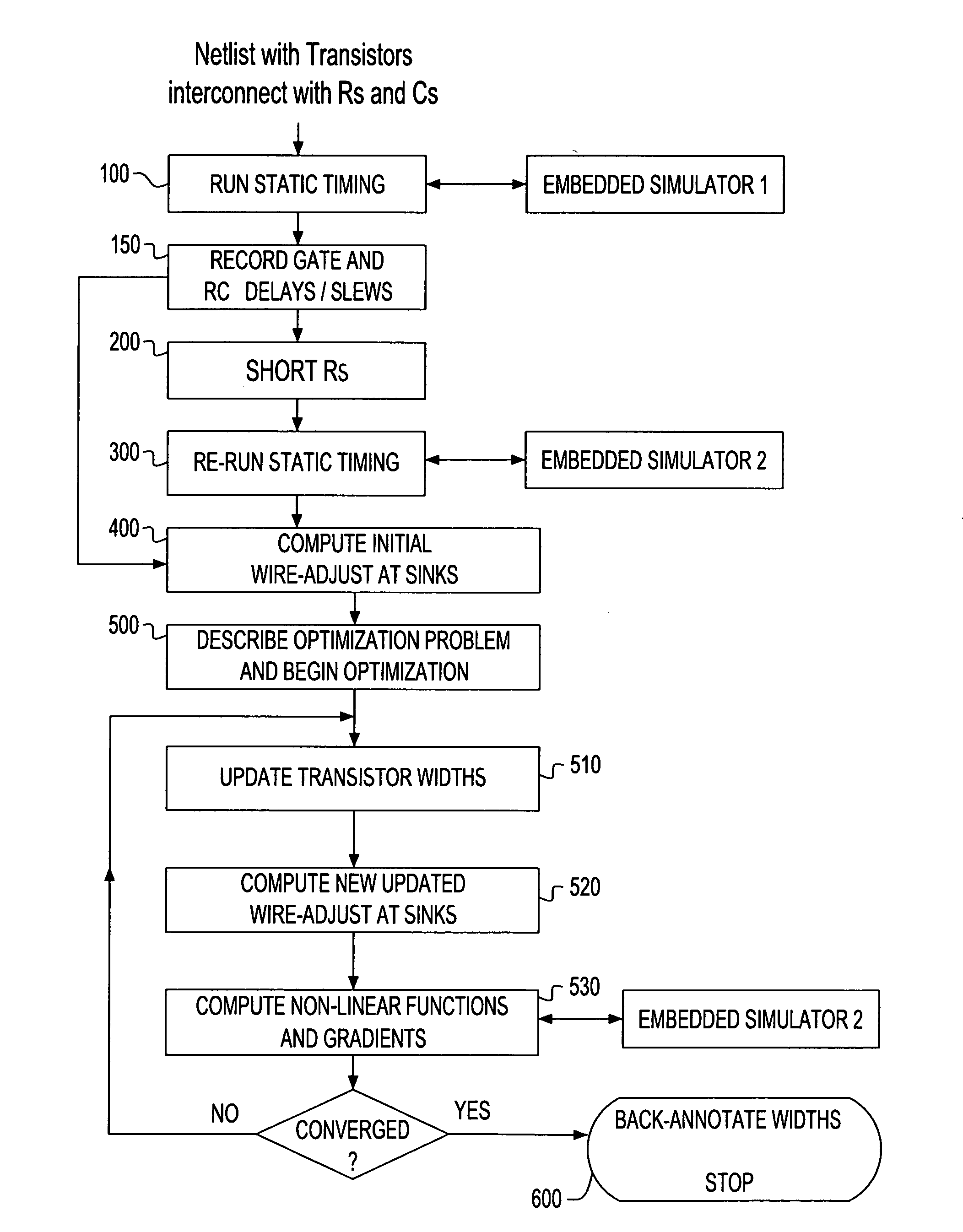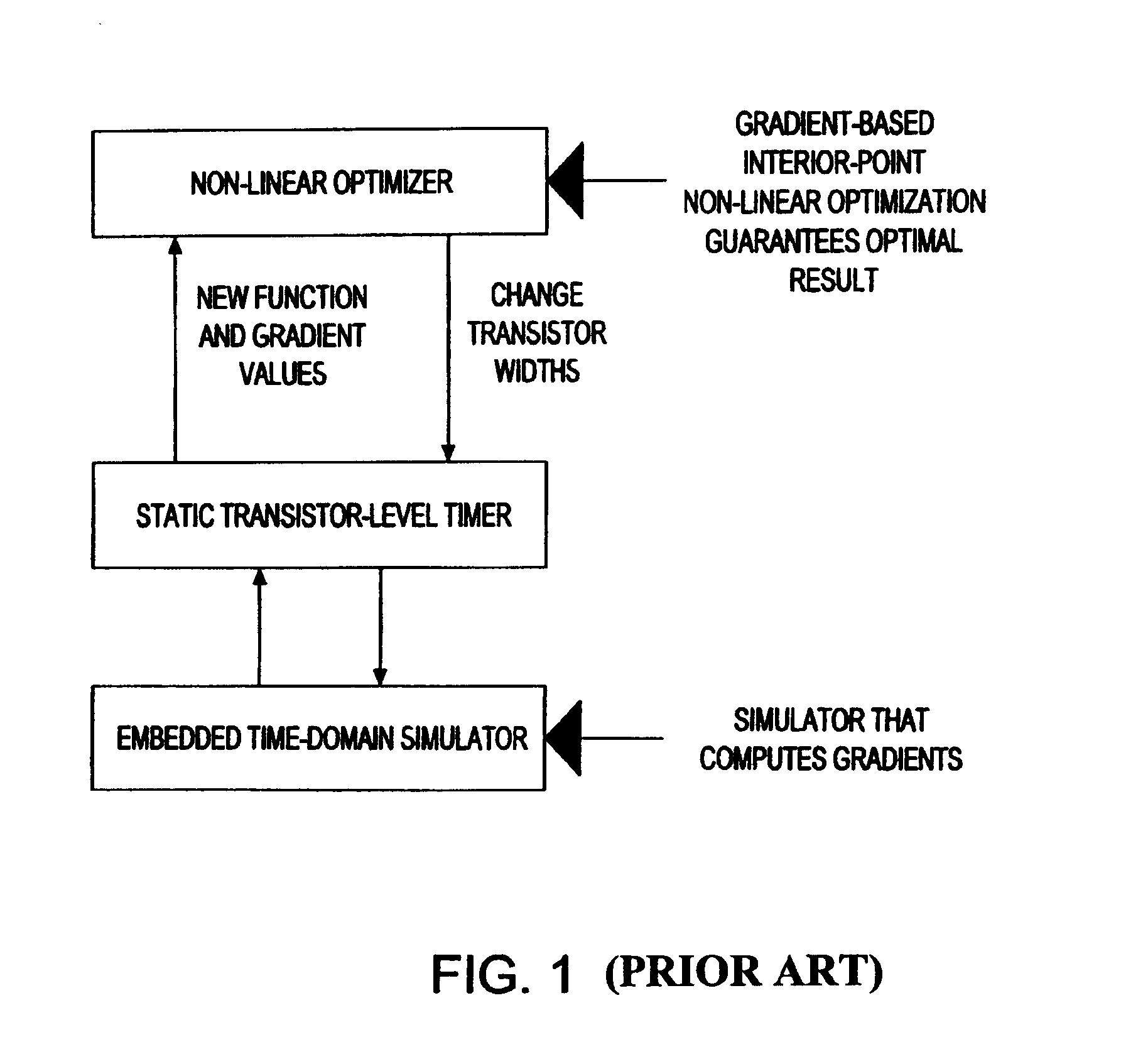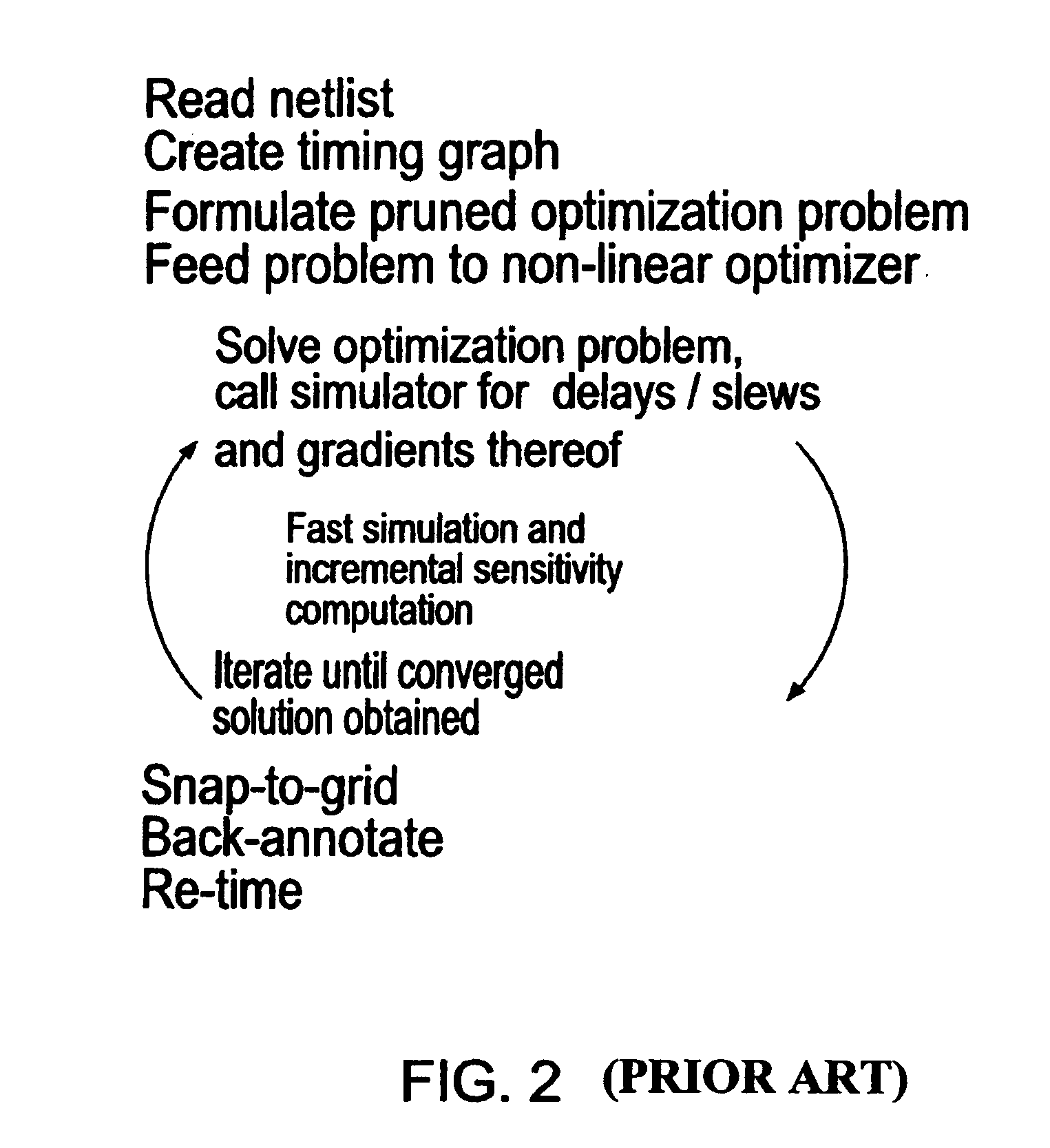Hybrid linear wire model approach to tuning transistor widths of circuits with RC interconnect
a technology of rc interconnect and wire model, which is applied in the direction of cad circuit design, program control, instruments, etc., can solve the problems of delay, power, area, delay or power of design, inability to adjust etc., and achieve the effect of optimizing the width of the transistor
- Summary
- Abstract
- Description
- Claims
- Application Information
AI Technical Summary
Benefits of technology
Problems solved by technology
Method used
Image
Examples
Embodiment Construction
[0020]Referring now to FIG. 4, there is shown a flow chart outlining the various steps of the ‘hybrid’ simulator approach of the present invention. The method detailed hereinafter is applied to a circuit design described by a netlist that includes interconnect wiring that includes both Rs and Cs.
[0021]In step 100, a static transistor-level timer for timing the netlist computes the timing information by running the Timing oriented simulator (also referred to, for simplicity, as Simulator 1).
[0022]In step 150, in an operation referred to as the pre-tuning phase, the gate delay and slew and RC delay and slew information of each stage is recorded. The gate delay is the delay from the stage input to the output node of the gate. An RC delay is the delay from the gate output (which is also the source node of the interconnect network) to a net sink, and there will generally be a different RC delay for each net sink. The widths of all the transistors become the initial values of the netlist....
PUM
 Login to View More
Login to View More Abstract
Description
Claims
Application Information
 Login to View More
Login to View More - R&D
- Intellectual Property
- Life Sciences
- Materials
- Tech Scout
- Unparalleled Data Quality
- Higher Quality Content
- 60% Fewer Hallucinations
Browse by: Latest US Patents, China's latest patents, Technical Efficacy Thesaurus, Application Domain, Technology Topic, Popular Technical Reports.
© 2025 PatSnap. All rights reserved.Legal|Privacy policy|Modern Slavery Act Transparency Statement|Sitemap|About US| Contact US: help@patsnap.com



